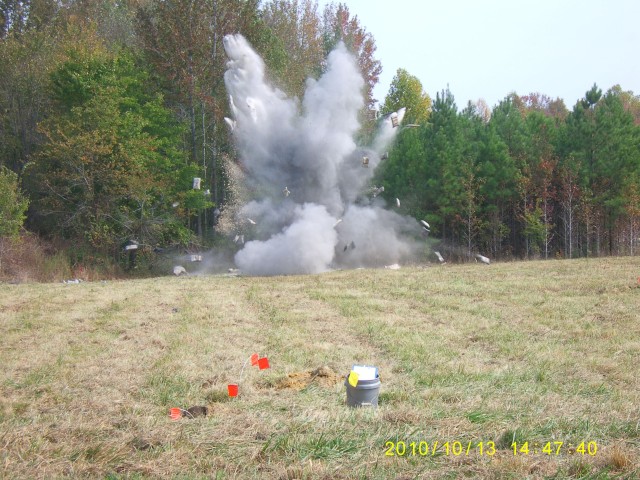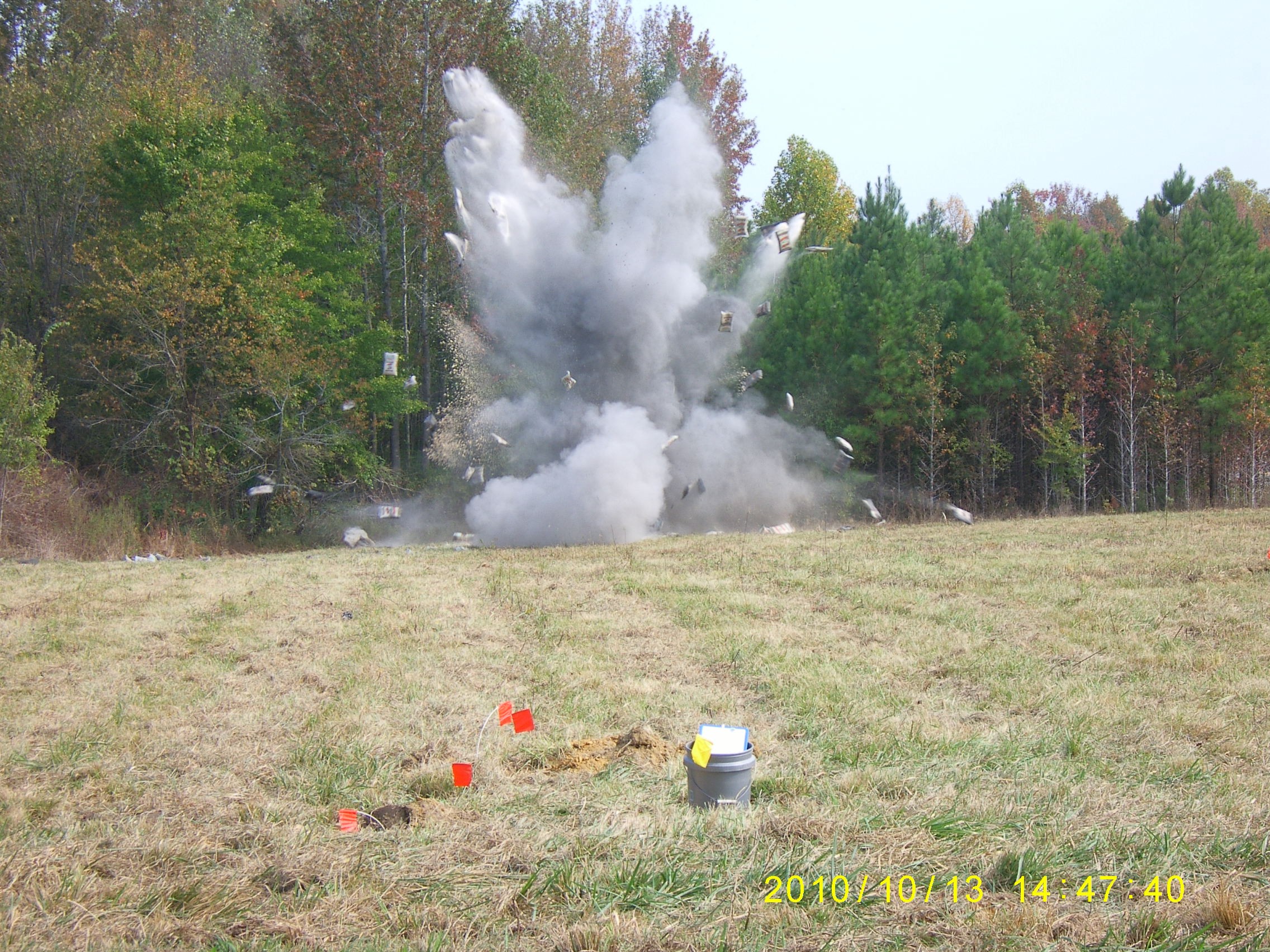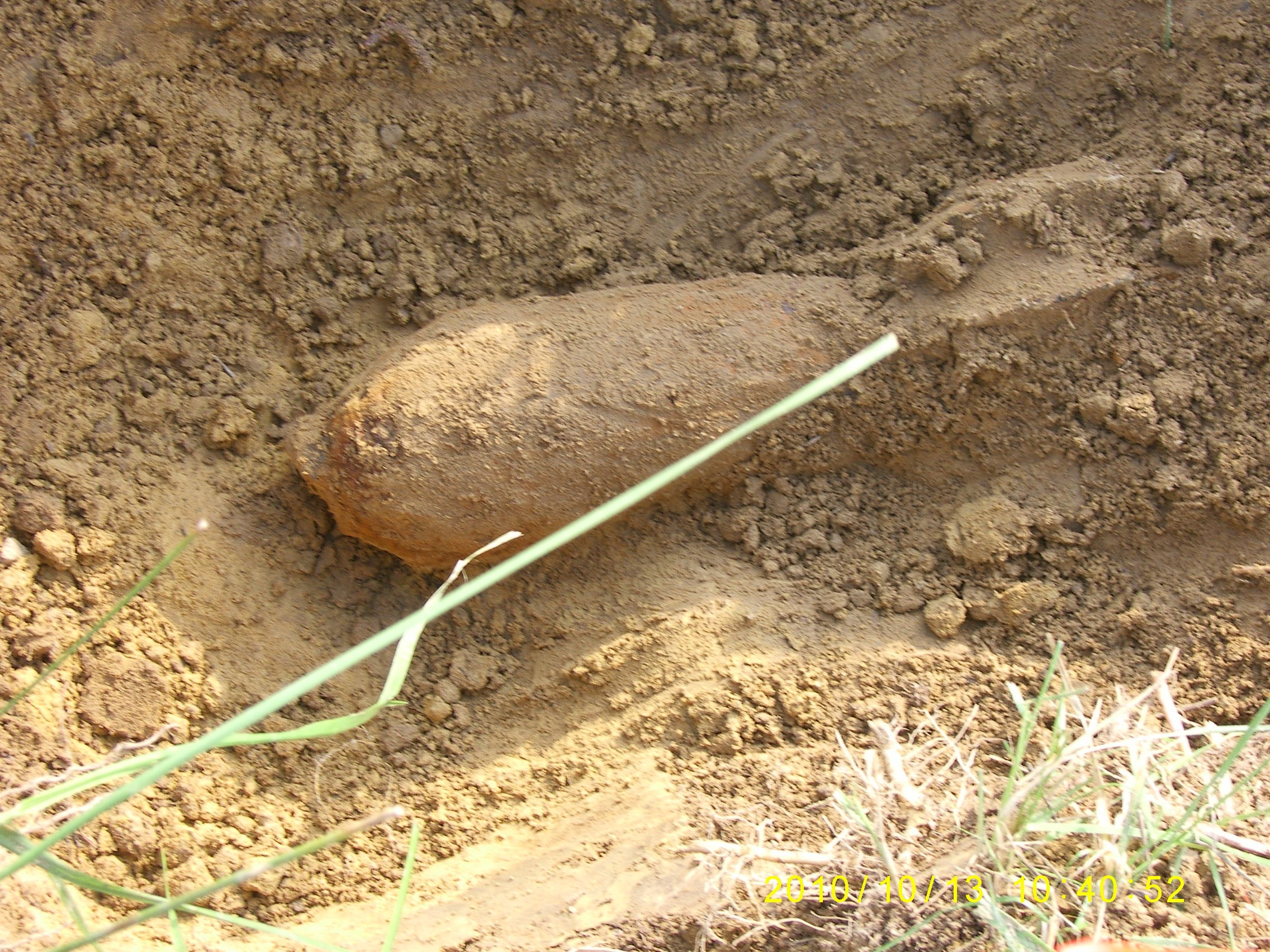ROUGEMONT, N.C. - Contractors working for the U.S. Army Corps of Engineers in recent weeks have discovered and detonated a number of World War II-era explosives at the Camp Butner site. The contractor, USA Environmental, discovered the rounds as part of an ongoing Formerly Used Defense Sites project to find and remove unexploded ordnance, or UXO, at Camp Butner.
"The power of each detonation shows how dangerous these unexploded rounds can be," said Wilmington District Project Manager Bob Keistler. "That blast photo is worth a thousand words to explain why it's important not to handle any suspicious item found in or near the former Camp Butner area."
Camp Butner is a 40,000-acre former U.S. Army installation in Person, Granville and Durham counties in North Carolina, near a rapidly developing suburban area north of Durham. Infantry training was conducted on the site during World War II, and unexploded ordnance found in the area includes artillery rounds, bazooka rounds, rockets, mines and hand grenades.
Among the munitions found in October were a 155-millimeter and four 81-millimeter mortar rounds. All were destroyed, as shown in the accompanying images.
The detonation uses small shape charges called perforators, said Hank Counts, an ordnance and explosives safety specialist from the Savannah District, who works with the UXO contractors at Camp Butner. But the big explosion is from the original round - still powerful and dangerous after more than 70 years.
The blast in the photo came from two 81-mm mortars, each containing more than a pound of cast TNT, detonated with two small perforator charges each, Counts said. The mortars were carefully moved from where they were found to a 3-foot-deep hole lined with sand, and the perforators attached. Plywood and 75 sandbags were than piled atop the mortars and the hole before detonation. For reference, the photo was taken from more than 400 feet away, and the little square things flying through the air are those sandbags - weighing as much as 25 pounds apiece.
Wilmington District Environmental Engineer Ray Livermore, who works with the contractor and property owners in the clearance area, explained what residents can do should they encounter something they suspect might be old military explosives.
"We ask anyone who finds a suspicious object to follow the 'Three Rs' to be safe," he said. "First, RECOGNIZE the object is a potential UXO. RETREAT from the object, and REPORT your find to local fire safety or law enforcement officials."
Local authorities are experienced, and know who to contact to address the issue, Livermore explained.
The Department of Defense Environmental Restoration Program (DERP) funds cleanup of sites like Camp Butner under the Formerly Used Defense Site (FUDS) program. The U.S. Army Corps of Engineers acts as the Defense Department's agent to get the job done. Wilmington District is the Corps' project manager for the Camp Butner FUDS project. For more information, visit the Camp Butner section of the Wilmington District website.
Related Links:
USACE Formerly Used Defense Sites program






Social Sharing